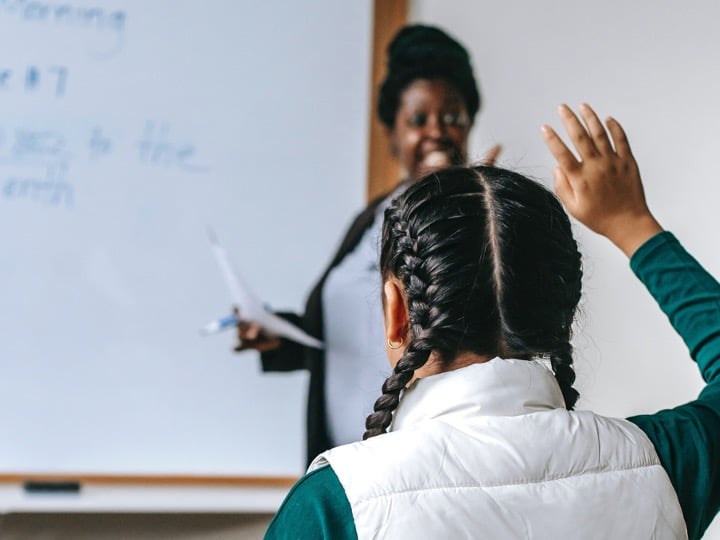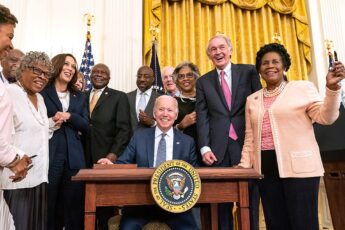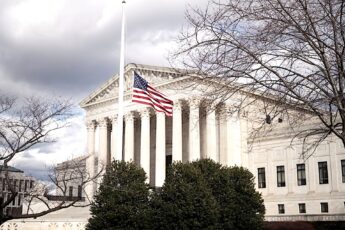Asking questions seems easy enough. But after spending any time at all teaching you know it’s not. Certainly, not asking great questions anyway. It’s one of those subtle yet fundamental skills I don’t recall explicitly learning in my teacher prep program, but it was so awkwardly and discouragingly apparent as soon as I was licensed and handed a roster of students. I recall many conversations with my mentor teacher specifically about crafting questions.
Even with her help, though, it was clear that asking great questions is much more involved than a few isolated suggestions can solve. And so that’s where I found myself in the trial-and-error hamster wheel for several years. I’m certain it was because wording and rewording my questions was one of the few concrete things I felt I had control over in my students’ learning. I kept asking myself, “How can I ask a better question to get a better outcome?”
Over the years, I have had many failures, redos, and finally some successes, and, gosh, do those successes feel like magic. Students are genuinely interested, we are learning meaningful things, and they are set up to be successful.
Part of what took me so long was that even though the intent behind my questions was in the right spot, I was still committing late-stage mistakes that were preventing the circuit of student learning to fully close. Making those final rounds of tweaks made an enormous difference, so I have to share them with you.
Here are those three question-asking mistakes I was making over the years in my social studies classroom with tips for how you can leapfrog over them and get to that magic part faster.
Mistake #1: Posing questions that can’t be answered immediately
I know, I know, this seems strange if the whole point of asking questions is to measure what students have learned, but on Day 1 your students need to have an immediate gut-reaction answer to the unit’s driving question to be hooked. Of course, they will develop a much more supported, nuanced answer by the end, but they need to be intrigued from the start.
And you don’t intrigue anyone with a question they have no idea about. Your driving inquiry absolutely shouldn’t be about the effects “New” immigrants had on turn-of-the-century America, or about how the three branches of government check each other. Because those questions are boring and don’t give students a reason why they should care.
Instead, reflect on the big picture takeaway that you hope students to remember well past this unit. Or brainstorm what debate is at the core of that topic or event. Somewhere in there lies your driving question.
Imagine instead asking questions like “Are immigrants more American than Americans?” or “Is America’s government really a democracy?”
If you posed a question like that, your students could walk to the side of the room marked Yes or No and debate each other for 30 minutes on that first day.
Unit-long inquiry questions should be “larger-than-the-content” Level 3 on Costa’s Levels of Questions, not an “analytical” Level 2, which is topic-specific like your traditional history class essay prompt.
“To what extent did the New Deal programs alter the role of the federal government?” isn’t going to hook anyone. Not in an on-level middle or high school classroom. Certainly, this question has its value in an AP US History class, a college economics course, or a policy debate about a current-day recession. It is not a bad question; it’s just a bad inquiry question.

Think of one unit that’s your favorite to teach. It’s likely because something has always intrigued you, like
• an eternal struggle
• a balance that is difficult to maintain
• an ethical question at its core
• a truth about the human condition
For example, going back to the New Deal, I’ve always been intrigued by the tough spot the federal government is in during any recession—send direct unemployment aid or create programs to address the recession’s causes? The answer is not really either/or, but somewhere in the middle of the two; which is why it will always be debated. And it’s one of those debates that people have gut reactions to before they know any details and, as they learn more, it becomes “chewier.”
That makes for the perfect set-up for a great inquiry question. Imagine a question like “How should the government prioritize its aid during a recession?”
Challenge: Reflect on what enduring issue is at the center of your favorite unit. How can that be phrased into a question with a gut reaction response, yet also no single right answer?
Mistake #2: Inadvertently still asking insensitive or exclusionary questions
This mistake is found more in summative assessments like end-of-unit essays or creative writing tasks, but doesn’t hurt to still check all your questions.
History has mostly been presented from a White perspective. It is simply a truth we must acknowledge. We need to remember that’s what history is—perspective: how people think things happened in the past. Not only is this truth crucial to share with your students, but it’s what makes our content fascinating—history is only what we make of it.
The “Founding Fathers” title wasn’t assigned until the early 1900s. Women’s Studies programs only date back to the 1970s. And even the “Greatest Generation” didn’t become a popular term until Tom Brokaw wrote a book with that title in the year 1998.
And currently American society is shifting to ever more broadly understand and share about past events that better include experiences and viewpoints of BIPOC people (Black, Indigenous, and People of Color). Changing how we understand the past is always happening, so today’s shift shouldn’t be seen as a sacrilegious “rewriting of history,” but rather a healthy example of what history does, which is constantly change!
In an effort to make this shift, you likely already have been incorporating more perspectives, focusing more on primary sources, and better covering tough subjects. This is great!
But with this we need to be even more careful and critical of how our well-intended questions are worded because they can create new issues we don’t realize. Here are a few types of questions to be on the lookout for and some thoughts on why they are problematic.
Questions requiring students to take on the perspective of a person in a traumatizing event. This could be anything like “Imagine you were a Japanese American interned during WWII…” or “What would you have done if you were Emmitt Till’s mother…” or even “Why might Native Americans have felt…” These seem like they encourage empathy and reflection, which is why you may have been asking them for years.
But the truth is, asking your students to do these tasks oversimplifies and trivializes horrifying events they will never fully understand and can even force them relive their own traumatic experiences or those of their ancestors.
Instead, switch to questions that require students to pull evidence from the sources they examined. Like asking “How did photographers humanize the interned Japanese Americans with their images?” or “What kind of impact do Civil Rights activists say Emmitt Till’s funeral had on them?”
Questions asking if a person was good or bad. For example, “Was Andrew Jackson a hero or a villain?” Asking this question means you have covered evidence for both, which is great. The problem, though, is how the question presents the option for a student to pick one side and, in so doing, dismiss the other. In this case, the possibility exists for picking “hero,” perhaps because of his military service, and ignoring his Indian removal policy. Not only does this type of question oversimplify historical events and people, but just by asking it you are communicating that something horrific can be overlooked. This question also makes one (usually white, male) person the sole focus of an entire era.
A question like this is best replaced rather than reworded, especially with one that includes multiple diverse groups so students can reflect on larger historical significance. In this case, try something like “Who most benefited and most suffered from President Jackson’s policies? How so?”
Questions that discuss traumatic events nonchalantly. For example, you may be asking “How did the Framers use of compromise to create the original US Constitution?” as a way to ensure students acknowledge how slavery was permitted and embedded into the document (great!), along with the other areas of compromise. In reality, though, this question ends up likening the horrific practice of owning other persons and treating them like chattel to an inanimate chess piece—something moved around until the end goal was achieved, and one which was interchangeable with the other, far less dire, compromises. This can happen when you are trying to cover everything in a single question.
So in this case, separating out your questions may be best. Ask a question specifically about slavery in the Constitution and if you want to assess the other compromises, create a second question. Something like “What were two ways slavery was embedded into the original Constitution and what were their effects?” gives more respect to the situation.
Questions with a morally “right” answer. For example, asking “Was manifest destiny inevitable?” where you present a case of “no” to students all throughout the unit. This is a question headed in the right direction, because you are tackling the White-centric narrative, but, as written, it still validates the option of the other side. And if a student still makes the “yes” argument, despite your evidence to the contrary, it puts you in a tough spot as a teacher.
Is the question you are asking one that answering either way is equally “right?” If not, rework its focus.
One way to do this is to distinguish between what you want students to learn are accepted truths (for example, that 1800s White Americans felt moving West was their destiny) and to learn as enduring takeaways (how that sense of ownership devastated both indigenous peoples and the environment). In this case, posing a question like “To what extent was the West impacted by ideas of manifest destiny?” sets students up in a way that’s not a leading question, but still sets them on a path to a powerful takeaway.
Some final thoughts to keep in mind as you do this important work. First, these sorts of questions have always had issues, they aren’t “all of a sudden” problematic; people are simply more aware now. On the reverse of that same coin, having asked these questions in the past doesn’t make you a bad teacher, but rather you surely are and have been a great teacher and being here proves that you’re really one of the best because you are constantly looking to grow!

I fully admit that I have asked all sorts of questions that now I cringe at the thought of. But, I find grace in these words from Maya Angelou: “Do the best you can until you know better, then when you know better, do better.”
Challenge: Look back over your activities and assessments with a critical eye. If possible, partner with a colleague so both of you get second set of eyes on your questions. Do you see any of these types of questions? How can they be word-smithed, reframed, or replaced to be more respectful and inclusive of all lived experiences?
This blog post on 10 questions to ask yourself to ensure your lessons are inclusive and antiracist may be helpful to you to review before you get started.
Mistake #3: Posing questions at all
I stumbled across this hack years ago and, to be honest, it was likely discovered during a “throw everything at the wall and see what sticks” stretch once I had my basic bearings as a teacher and was trying to level up.
It had become inevitable there would be several students who would always write one- or two-word answers or, worse, the dreaded “I don’t know” to formative questions, like exit tickets and end-of-activity wrap-ups. It’s easy to dismiss this as a problem with the student (“lazy” or “didn’t try,” sound familiar?), but I kept wondering if I as the teacher could do something.
Chip and Dan Heath, in their book Switch, call these “nudges”—small shifts in what you do to create different outcomes in others. Their book and this way of thinking has radically changed how I approach teaching. This is just one example.
Humans are efficient creatures. If writing two words answers a question, then there’s no logical reason to write a full sentence. Likewise, it’s easier to write “IDK” (ever think of the abbreviation in itself as an act of efficiency?) if there is any sort of roadblock.
“Answer in complete sentences” roughly translates to “because I said so” in student-speak. We want students to practice high-level writing frequently because it’s a hard skill, but that’s exactly why few students voluntarily write complex sentences, complete with clauses and commas, on everyday assignments. It’s human nature.
Instead of asking so many questions every day, rephrase these formative ones as sentence starters, especially so they can allow for multiple answers. It’s such an easy fix and it ends up helping all your students, including those who:
- may not understand a higher-level question
- struggle to write a complex sentence on-demand with no model
- are not motivated by anything that smells like “because I said so”
- have so much to say they don’t know where to start
- have strong or creative opinions and always want to share them
Any student you know not fit into one of types?
Here are few sentence stem archetypes to keep on-hand to pose at the end of class readings, videos, or activities:
- The strongest reason for (insert topic)… / The weakest reason for (insert topic)…
- The best example of (insert topic) is… / The worst example of (insert topic) is…
- This does / doesn’t illustrate (insert topic)… because…
- This (insert topic)… is / isn’t like (insert previous topic covered) in that… because…
- The one quote that best illustrates (insert topic) is… because…
Notice these stems focus students on selecting a single answer, out of many options, that they must support. This is a boon for your lower-level students without looking like an accommodation, and for your higher-level students it challenges them to have to pick their one best answer, which can lead to great class conversations.

Like magic, the “I don’t knows,” the incorrect answers, and the two-word responses stopped as soon as I made this simple switch. Even better, since students aren’t physically writing as much themselves, you are able to ask a few to really flush out not just their comprehension, but their personalized conclusion of the topic.
Challenge: Look at the end-of-class or end-of-activity questions you have for some upcoming lessons. How can those be rephrased into sentence stems instead?
Fine-tuning your question-asking skills is one of the toughest parts of creating an inquiry-focused social studies classroom, but once you’ve got it, it’s like magic between your four walls. And since inquiry and a thematic approach pair together so naturally, I suggest you check out my blog posts on designing your first thematic history unit and designing inquiry lessons for more practical tips like these.
Feature image credits: Katerina Holmes








